ADULTERATED SPIRIT
A farewell to martinis — not so quickly! Recreating Hemingway’s famous Montgomery
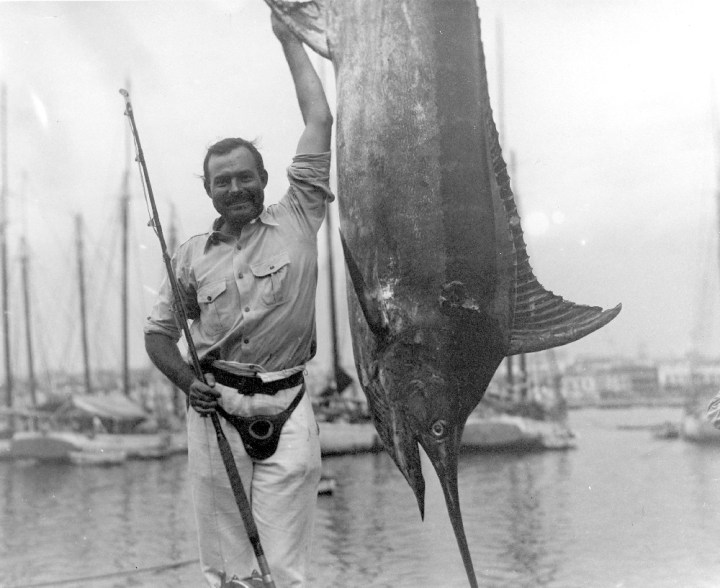
Equal to Ernest Hemingway’s appetite for life, was his appetite for alcoholic beverages. Although many cocktails have been invented by and attributed to Hemingway, according to the cocktail historian Philip Greene, his favourite was the martini.
Ernest Hemingway famously said, “In order to write about life first you must live it”, which would explain his massive appetite for life and consequent literary success.
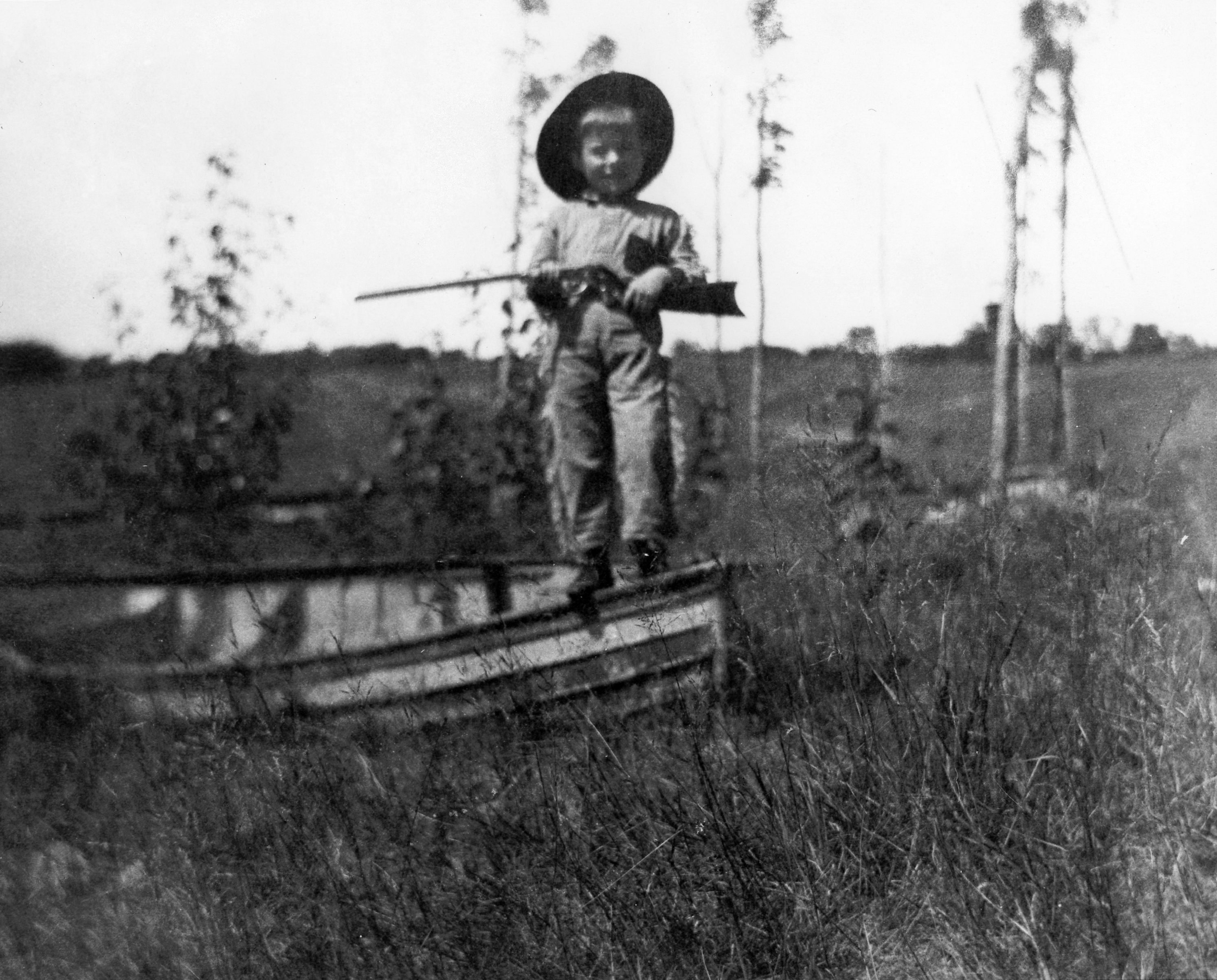
Young Ernest Hemingway holds a gun while standing on a boat, near Windemere Cottage at Walloon Lake, MI, summer 1903. Image: Ernest Hemingway Collection/John F. Kennedy Presidential Library and Museum, Boston.
Legend has it that Hemingway, on his father’s insistence, started hunting at the ripe age of three. During World War 1, he drove an ambulance and was badly wounded by an Austrian mortar shell, which later earned him the Silver Medal of Military Valour from the Italian government. He participated in the Spanish Civil War; during World War 2, he was awarded a Bronze Star from the United States for anti-submarine patrolling in his now-famous fishing boat Pilar; he set the world record for catching seven marlins in a single day.
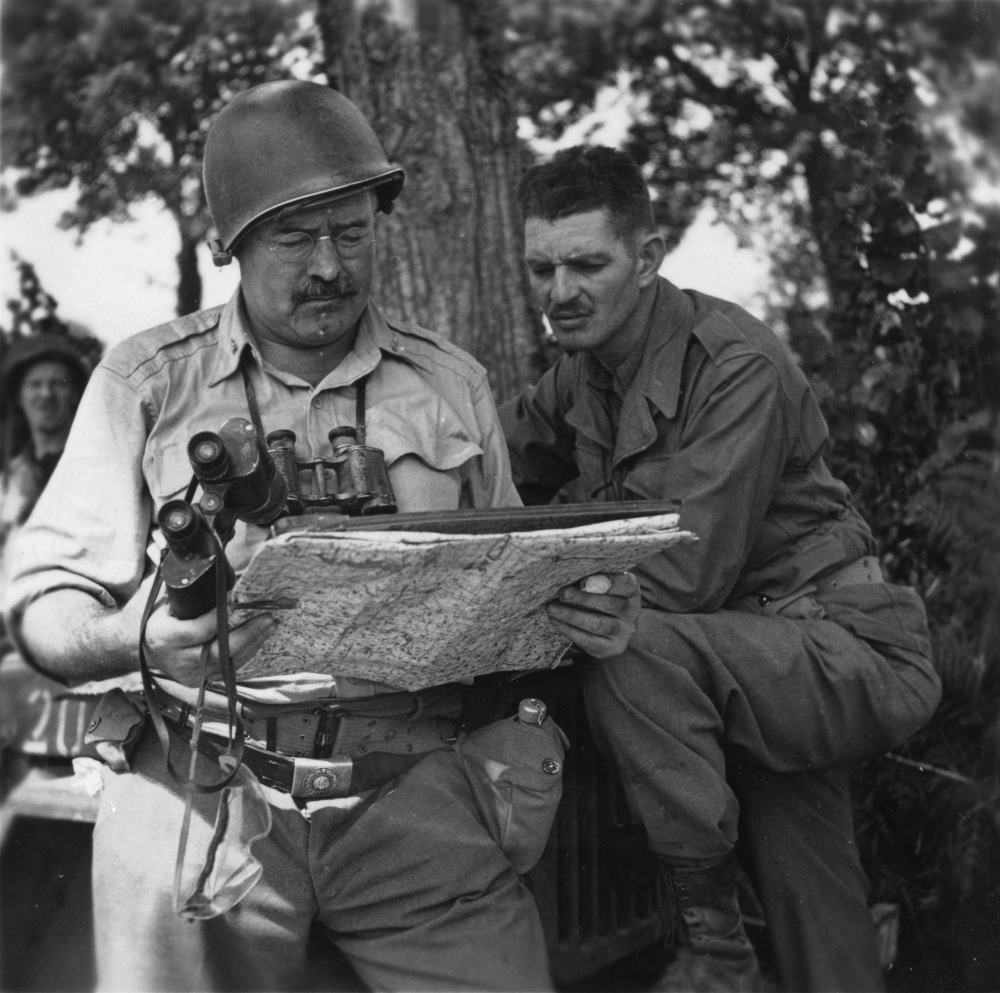
Ernest Hemingway with a soldier looking at a map in World War II. Image: unknown, held in the Ernest Hemingway Collection at the John F. Kennedy Presidential Library and Museum, Boston.
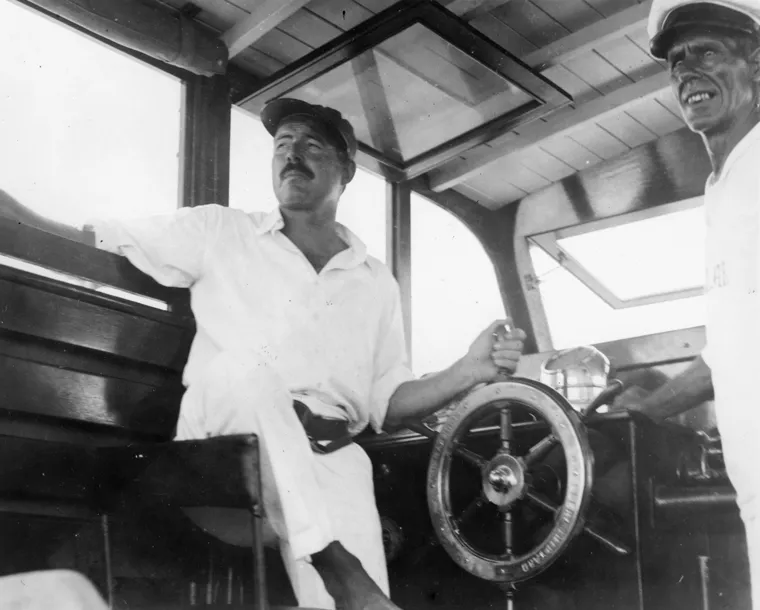
Ernest Hemingway and Carlos Gutierrez aboard Hemingway’s boat, the Pilar, 1934. Image: Ernest Hemingway Photograph Collection, John F. Kennedy Presidential Library and Museum, Boston.
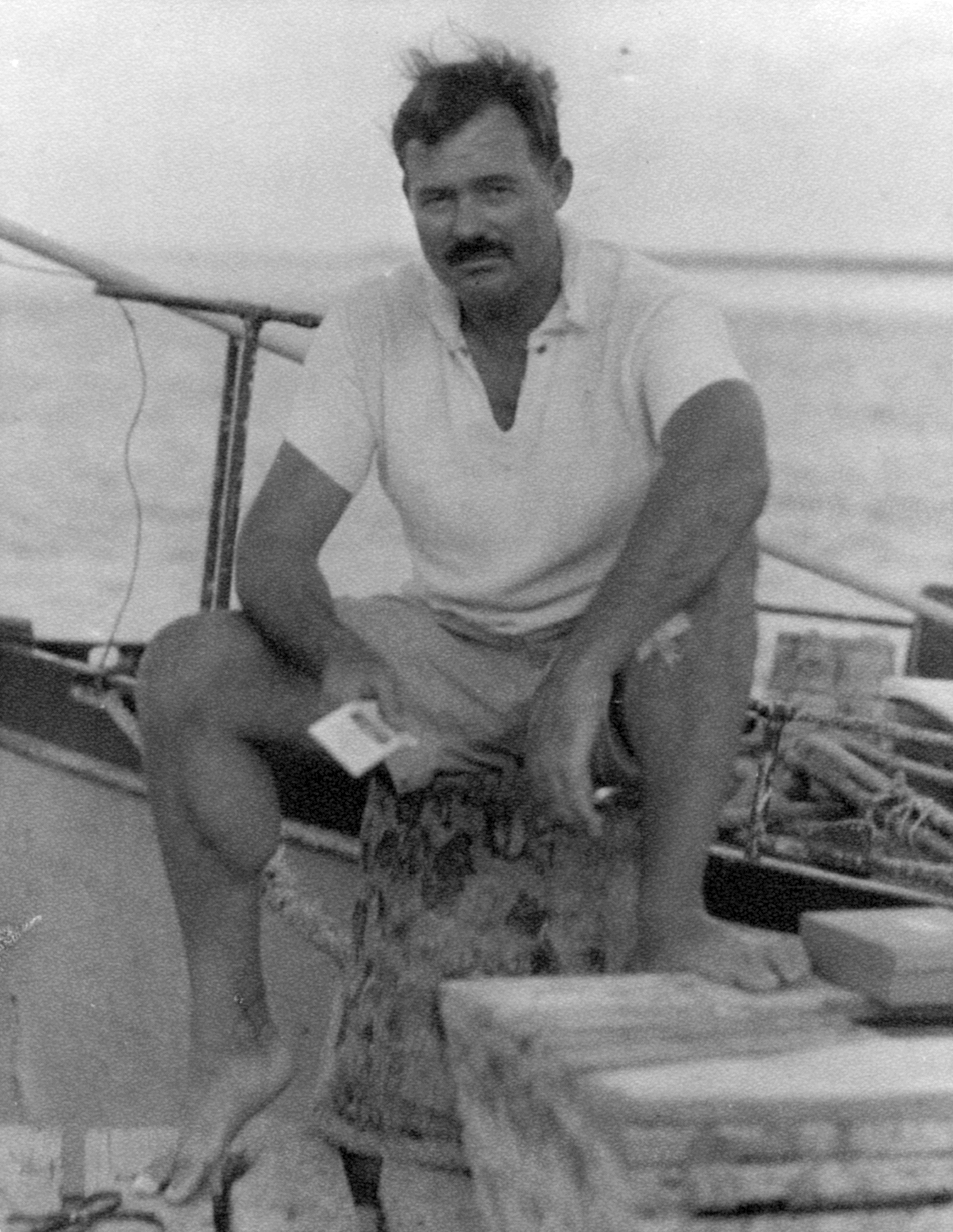
1930s- Ernest Hemingway sitting on a dock next to the Pilar, 1930s. Photographer unknown, Ernest Hemingway Collection of the John F. Kennedy Presidential Library and Museum, Boston.
While on holiday in Uganda, he survived two plane crashes in two days, resulting in the unique experience of reading his own obituary.

January 1954 – Crashed Cessna 180 that carried Ernest and Mary Hemingway. Uganda, near Murchison Falls. Image: Ernest Hemingway Photograph Collection, John Fitzgerald Kennedy Library, Boston.
Once, he took the urinal off the wall at his favourite watering hole, Sloppy Joe’s Bar in Key West, after it moved to a new location, claiming, “I pissed away so much of my money in that urinal that I own it.”
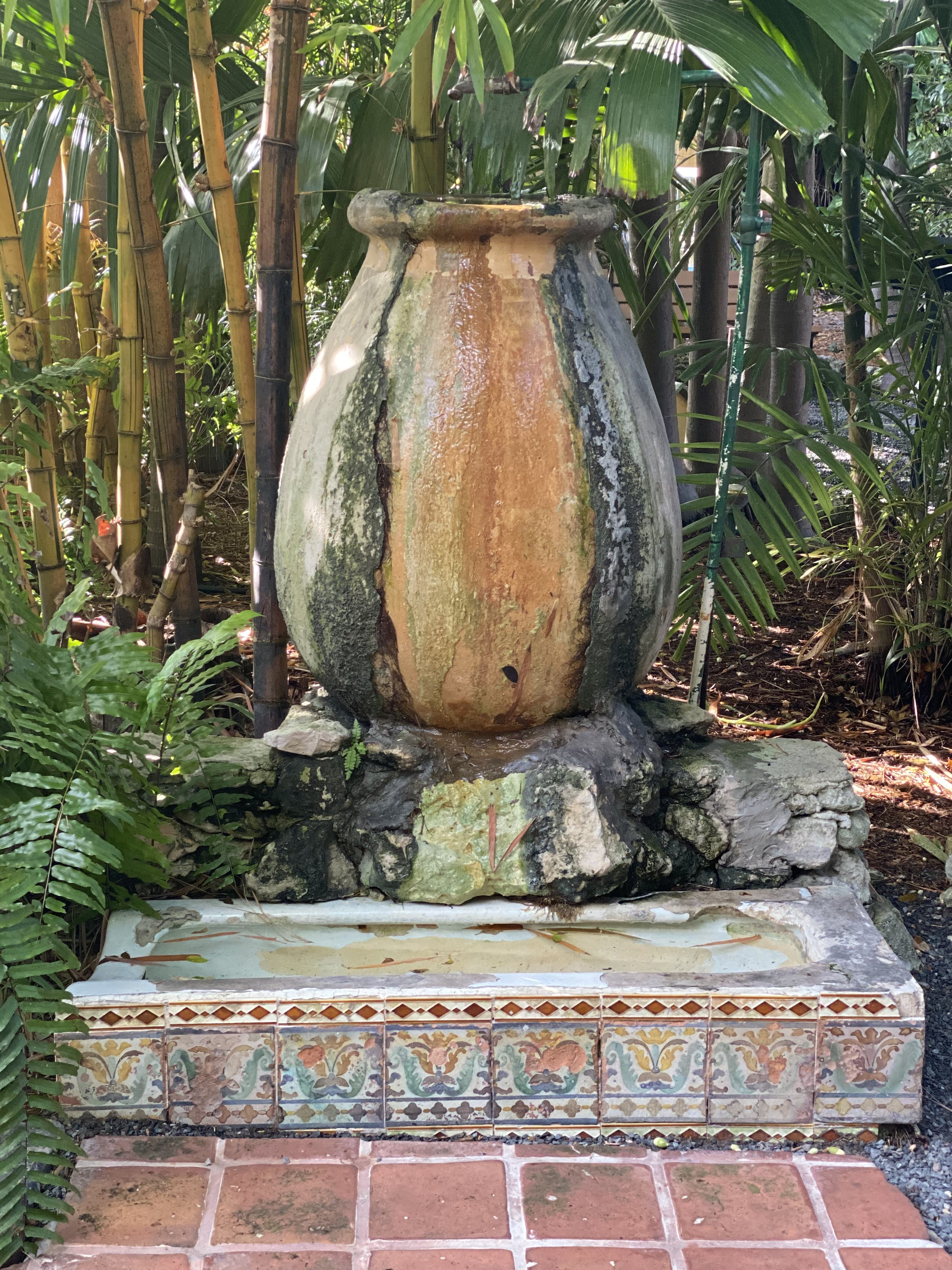
Ernest Hemingway – the famous urinal. Image: Hemingway Home & Museum
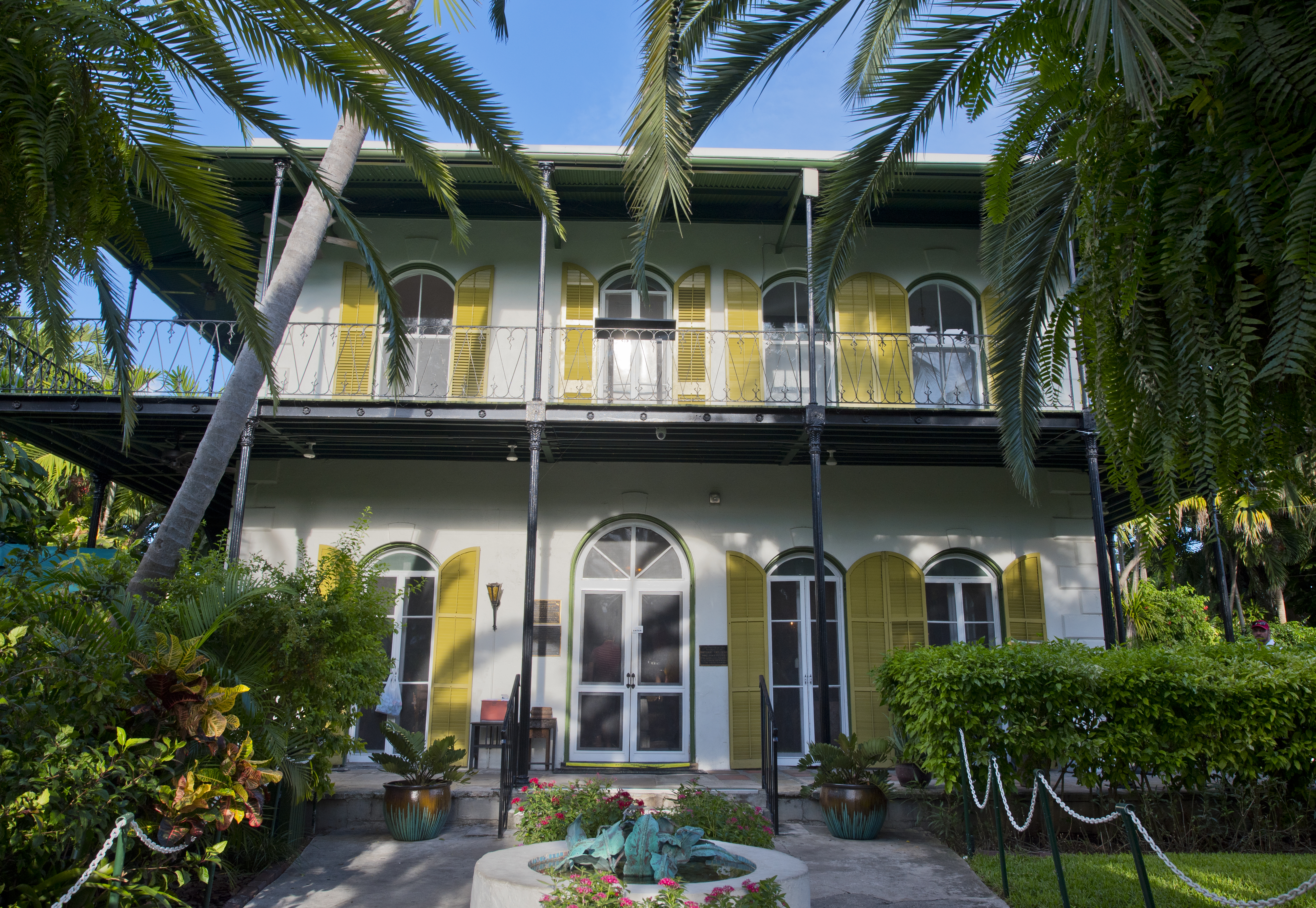
Ernest Hemingway’s home in Florida, house facade. Image: Hemingway Home & Museum
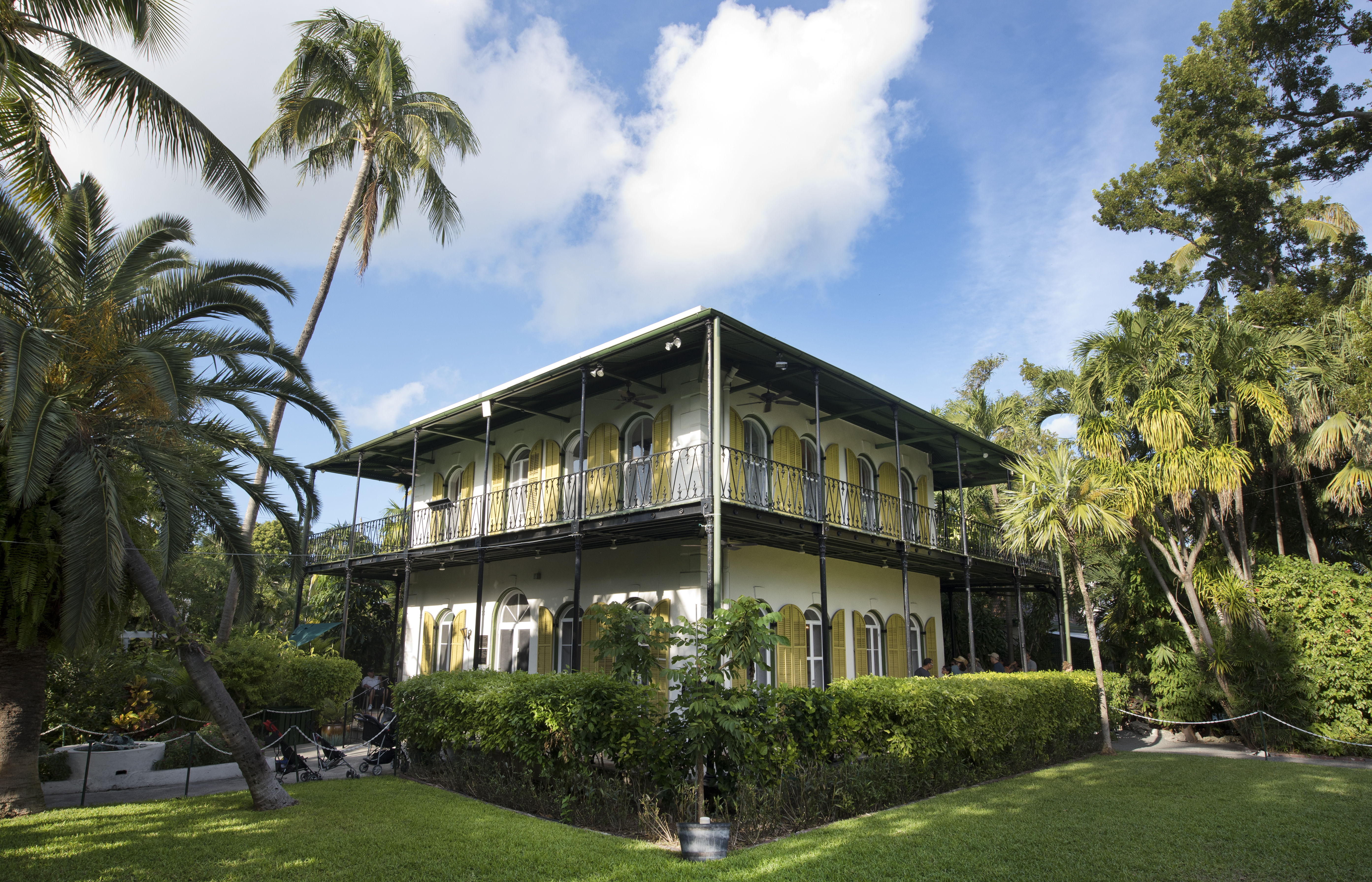
Ernest Hemingway’s home in Florida, house facade. Image: Hemingway Home & Museum
Hemingway was married four times, and published seven novels, six short story collections and two nonfiction books, earning him a Pulitzer Prize and Nobel Prize in literature.
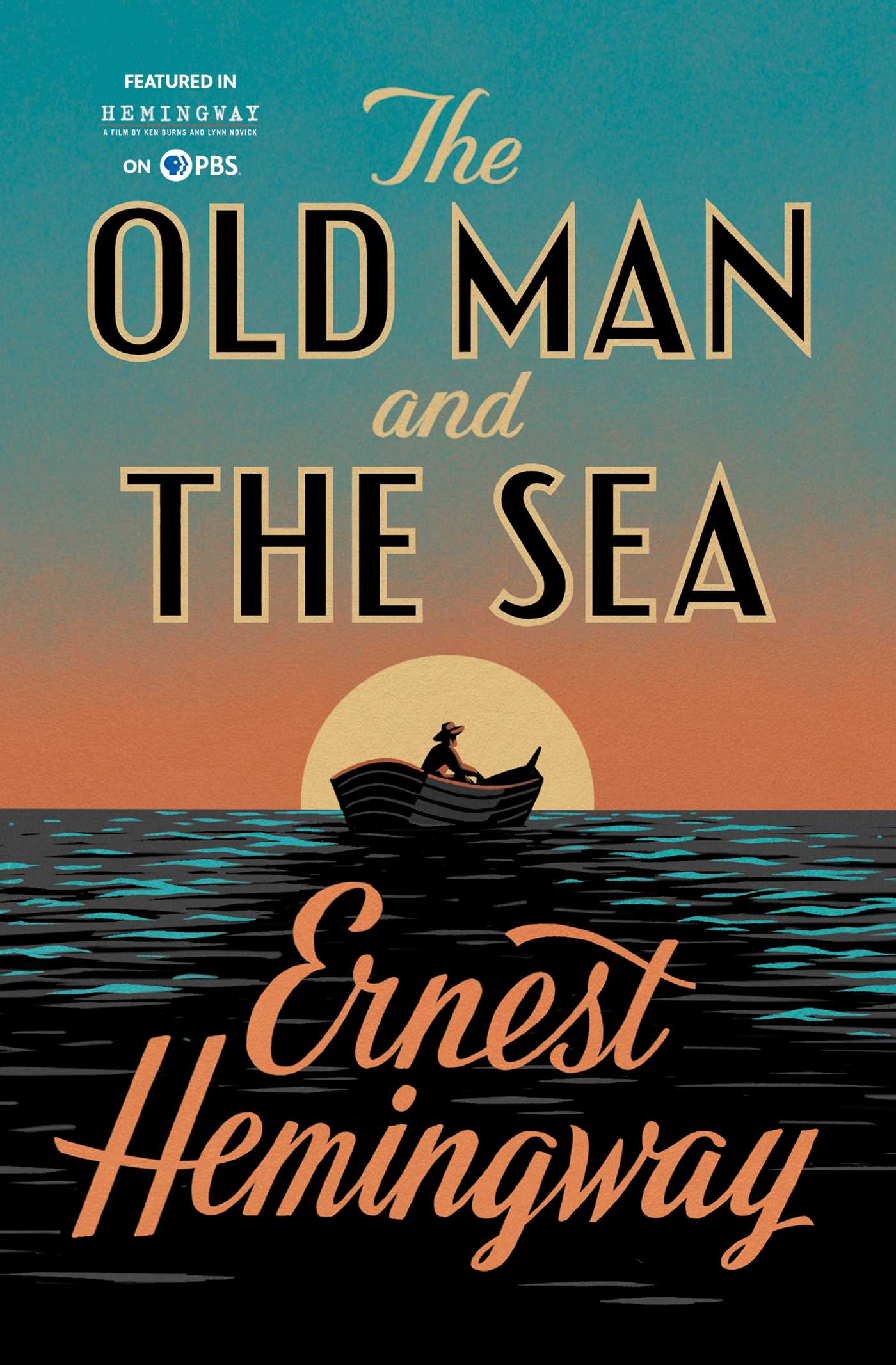
Perhaps equal to Hemingway’s appetite for life was his appetite for alcoholic beverages. Although many cocktails have been invented by and attributed to Hemingway, according to the cocktail historian Philip Greene, his favourite was the martini.
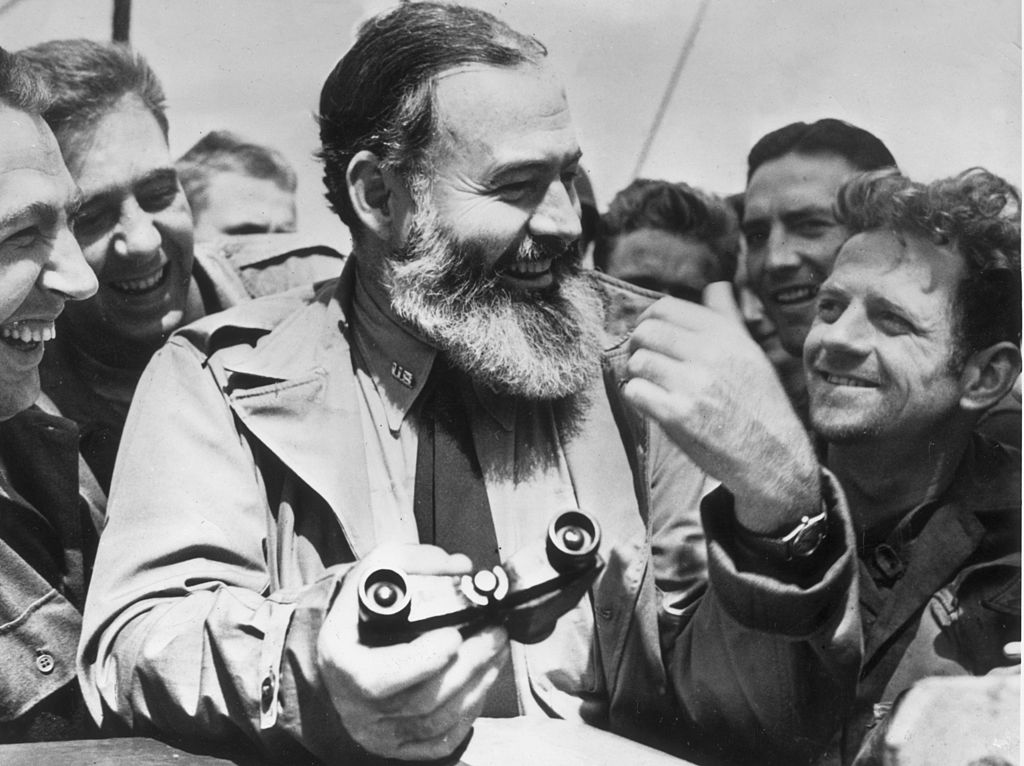
American writer Ernest Hemingway (1899 – 1961) travelling with US soldiers, in his capacity as war correspondent, on their way to Normandy for the D-Day landings in 1944. Image: Central Press / Getty Images
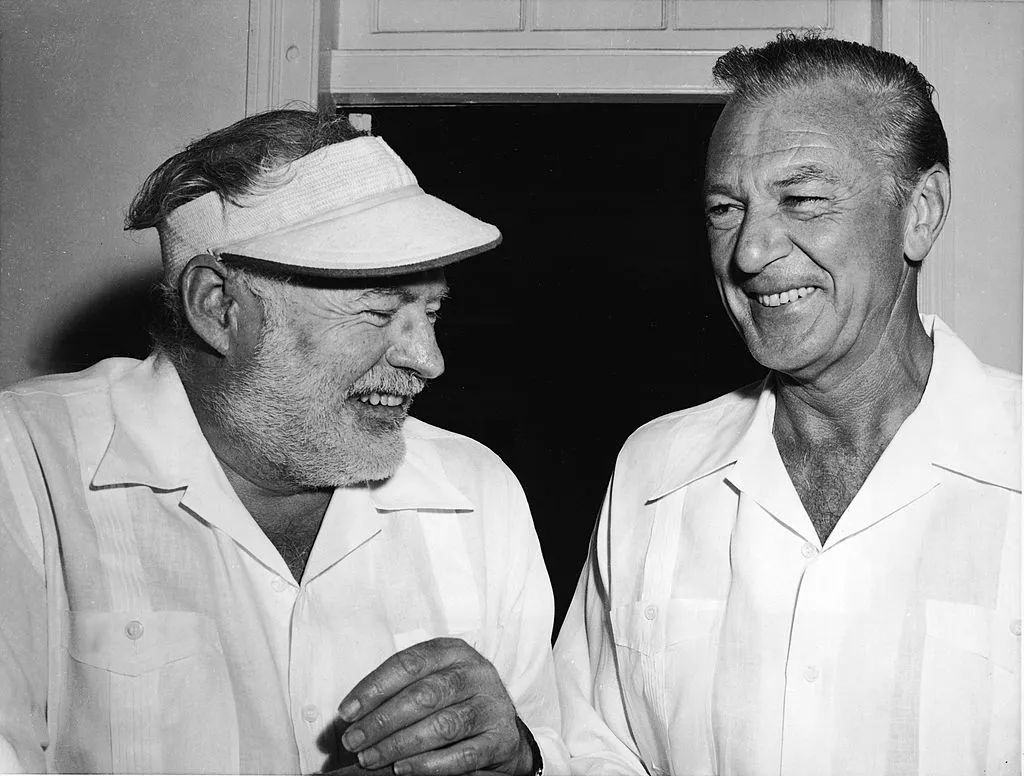
American author Ernest Hemingway (1899 – 1961) (left) shares a laugh with actor Gary Cooper (1901 – 1961) in Havana, Cuba, 1956. Image: Hulton Archive / Getty Images
In Hemingway’s 1929 novel A Farewell to Arms, he described his appreciation for the martini so eloquently that it’s hard to imagine why anyone who read these words would consider drinking anything else: “I had never tasted anything so cool and clean. They made me feel civilized.”
This simple yet sophisticated drink has been winning over hearts and tastebuds and infiltrating popular culture since it was invented in the 1880s — and quoted many times over.
“I never go jogging, it makes me spill my martini,” said American comedian, writer and singer George Burns; “Martinis are the only American invention as perfect as a sonnet,” said journalist HL Mencken; “He knows just how I like my martini — full of alcohol,” Homer Simpson; “I must get out of these wet clothes and into a dry martini,” Mae West; “A man must defend his home, his wife, his children, and his martini”, American actor Jackie Gleason; poet and writer Dorothy Parker exclaimed: “I like to have a martini, two at the very most; after three I’m under the table, after four, I’m under my host”; and Winston Churchill famously said: “I would like to observe the vermouth from across the room while I drink my martini.”
Although Hemingway wasn’t alone in his appreciation for the martini, he enjoyed them so much that he created his own, the Montgomery, named after Bernard Law Montgomery, a senior British Army officer who served in World War 1, the Irish War of Independence and World War 2. Legend has it that Field Marshal Montgomery refused to go into battle unless he had a 15-to-1 advantage. Because Hemingway liked his martinis bone-dry, he adopted this ratio over the typical ratio of six parts gin to one part vermouth.
Hemingway described his method in a letter to his publisher Charles Scribner: “We have real Gordon’s Gin at 50 bucks a case and real Noilly Prat and have found a way of making ice in the deep-freeze in tennis ball tubes that comes out 15 degrees below zero and with the glasses frozen too makes the coldest martini in the world.”
Ice from tennis ball tubes works well because of the reduced surface area compared to an equal volume of ice cubes, which means it takes longer to melt. However, the reduced contact between the ice and your martini also results in slower cooling. The upside of the slower melting ice is that it allows you to keep your drink cold for longer without the dilution from regular ice cubes. Because ice from tennis ball tubes won’t fit in regular cocktail mixing glasses, it might be best to invite some friends over before adding your ice tube to a mixing jug and filling it with the recommended 15-to-1 ratio of gin and vermouth.
In the meantime, pop your martini glass in the freezer and let’s celebrate Hemingway’s life by mixing a Montgomery.

The Montgomery Martini. Image: Dean Carlson
Ingredients
- 75 ml Gordon’s gin
- 5 ml Noilly Prat vermouth
- 1 x frozen cocktail onion (Spanish if possible) as garnish
Writer’s note: Noilly Prat vermouth is not commercially available in South Africa, so I recommend using Dolin Dry as an alternative French vermouth.
Method
- Leave martini glass in freezer for at least 15 minutes
- Add 5ml (1 teaspoon) of Noilly Prat vermouth to the frozen martini glass
- Add 75 ml of Gordon’s gin to mixing glass
- Fill a mixing glass with ice cubes and stir
- Strain contents from mixing glass into your frozen martini glass
- Garnish with a frozen cocktail onion
***
Hemingway’s adventurous spirit led him to explore, fish, hunt, and drink around the world. He first visited Cuba in 1928 and eventually took up permanent residence when he bought a house there in 1940, where he would spend the last 20 years of his life.
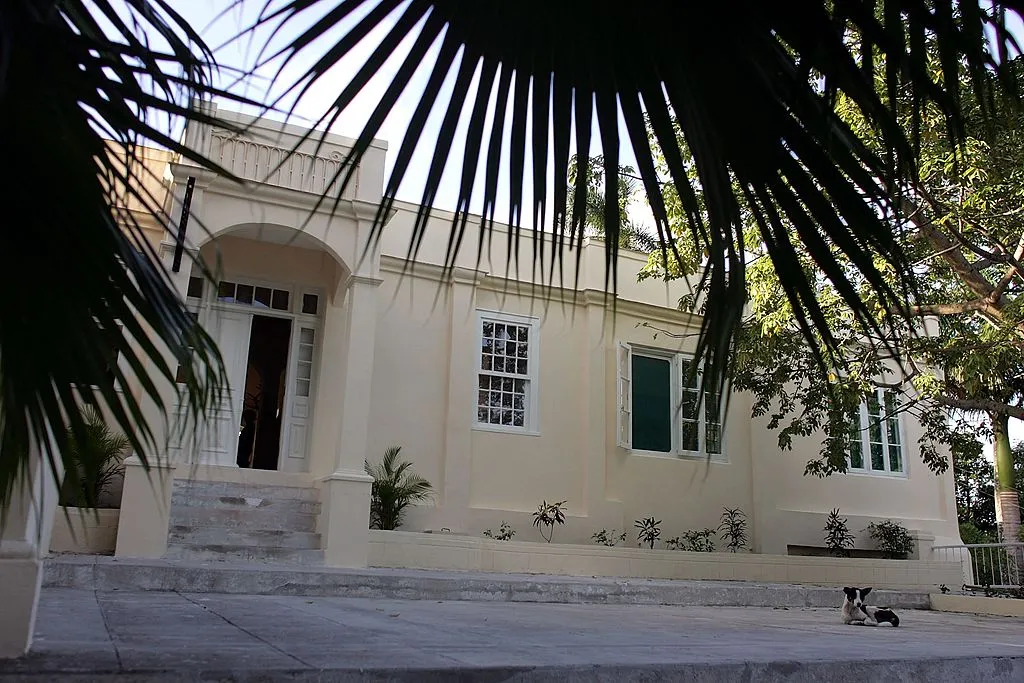
A dog lays in front of Finca VigIia, or “Lookout Farm,” Ernest Hemingway’s home from 1939 to 1960 December 4, 2006 in Havana, Cuba. Built in 1886 on a hillside the home is where Hemingway wrote ‘For Whom the Bell Tolls’, ‘The Old Man and the Sea’, ‘A Moveable Feast’, and ‘Islands in the Stream’. Image: Joe Raedle / Getty Images
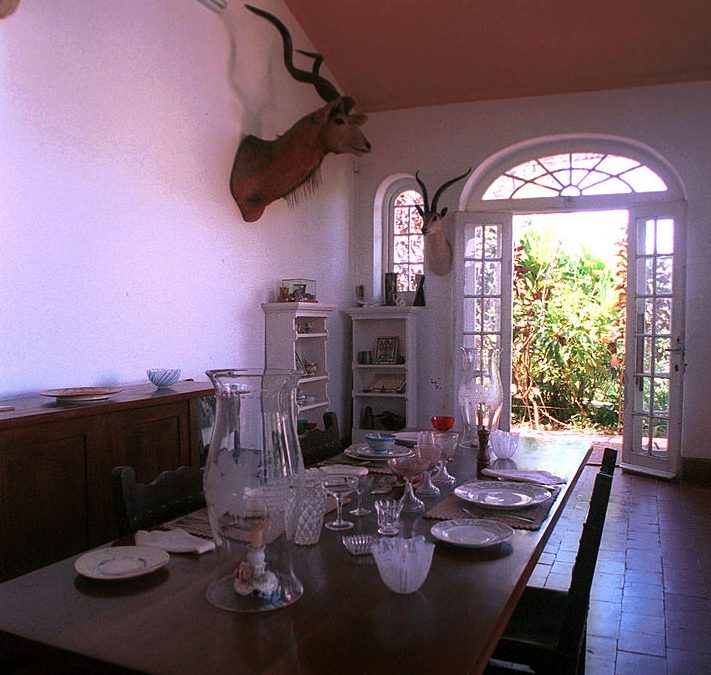
An interior of Finca de Vigia, the villa where author Ernest Hemingway lived from 1939-1960 is seen November 11, 2002 outside Havana, Cuba. (Photo by Jorge Rey/Getty Images)
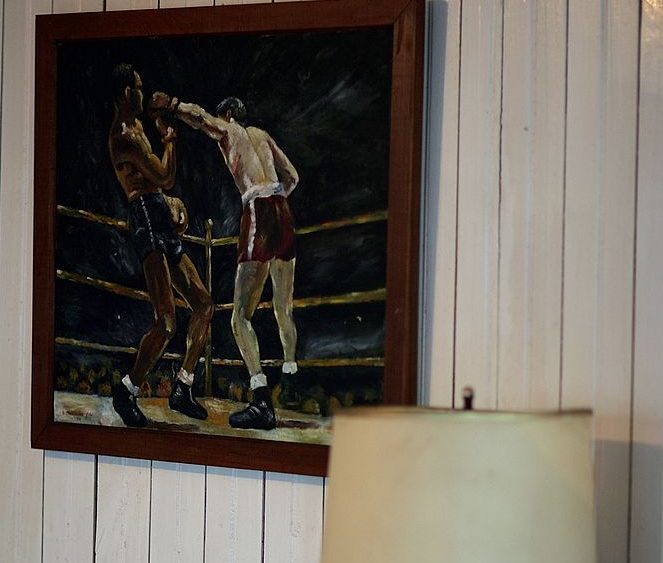
A painting hangs on the wall of Finca VigIia, or “Lookout Farm,” his home from 1939 to 1960 December 4, 2006 in Havana, Cuba. Built in 1886 on a hillside the home is where Hemingway wrote For Whom the Bell Tolls, The Old Man and the Sea, A Moveable Feast, and Islands in the Stream. (Photo by Joe Raedle/Getty Images)
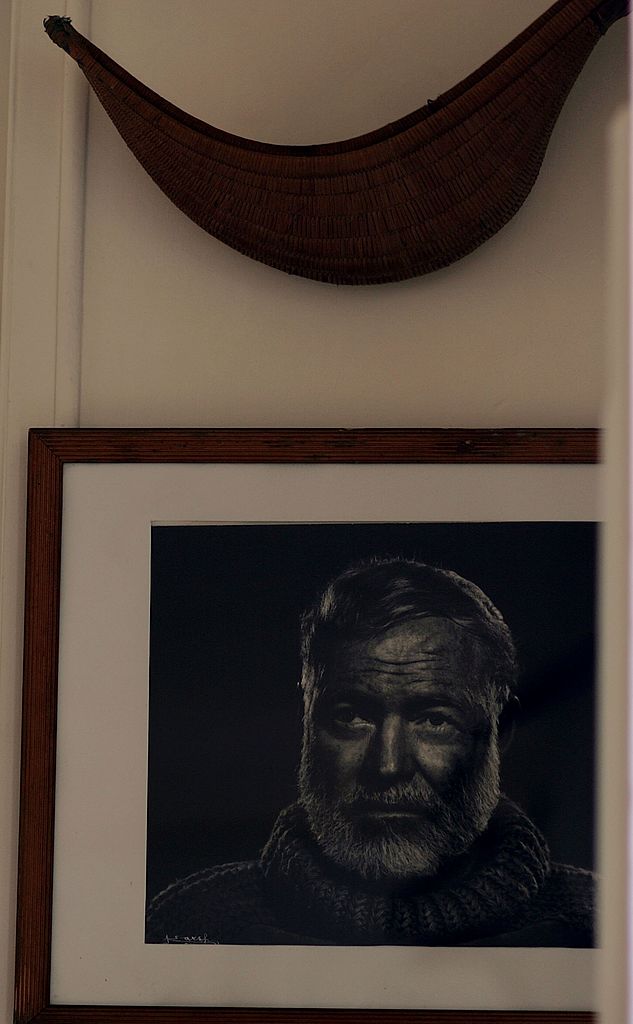
A picture of Ernest Hemingway hangs on the wall at Finca VigIia, or “Lookout Farm,” his home from 1939 to 1960 December 4, 2006 in Havana, Cuba. (Photo by Joe Raedle/Getty Images)
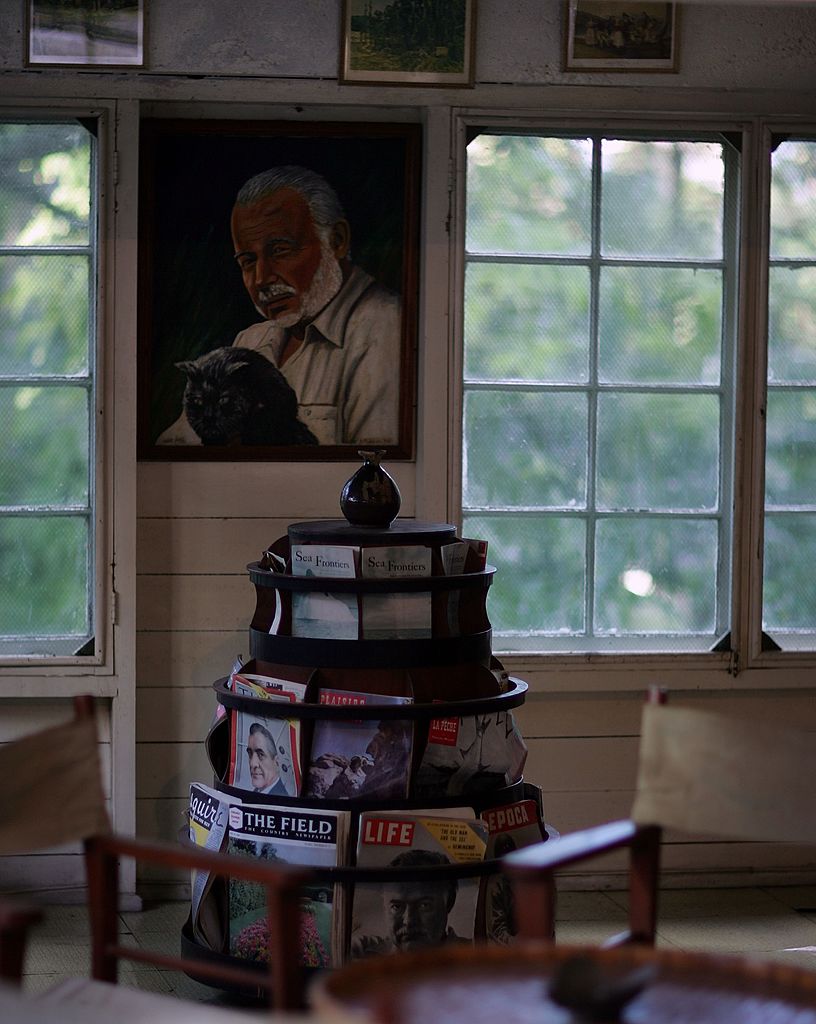
A painting hangs on the wall of the guest house at Finca VigIia, or “Lookout Farm,” his home from 1939 to 1960 December 4, 2006 in Havana, Cuba. (Photo by Joe Raedle/Getty Images)
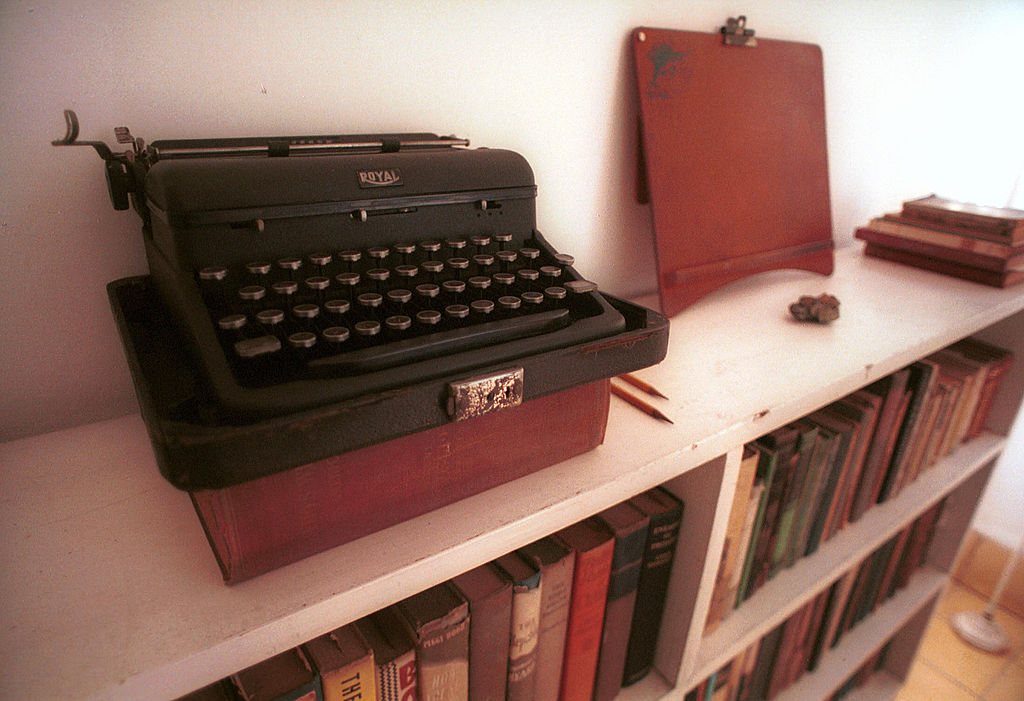
An old manual typewriter is seen in Finca de Vigia, the villa where author Ernest Hemingway lived from 1939-1960, November 11, 2002 outside Havana, Cuba. Image: Jorge Rey / Getty Images
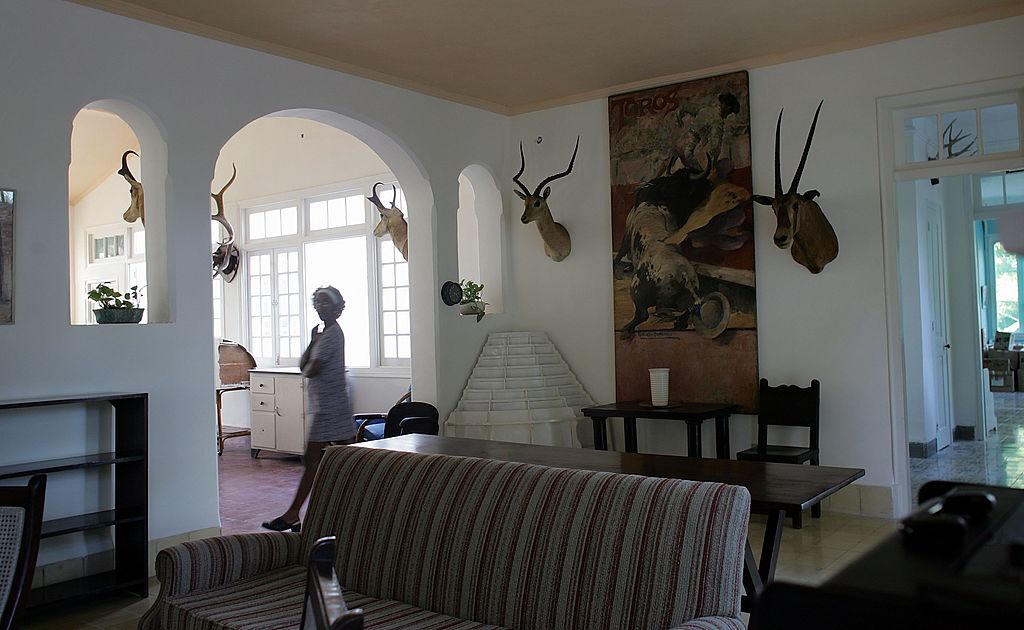
A worker walks through one of the rooms of Finca Vigia, or “Lookout Farm,” Ernest Hemingway’s home from 1939 to 1960 December 4, 2006 in Havana, Cuba. (Photo by Joe Raedle/Getty Images)
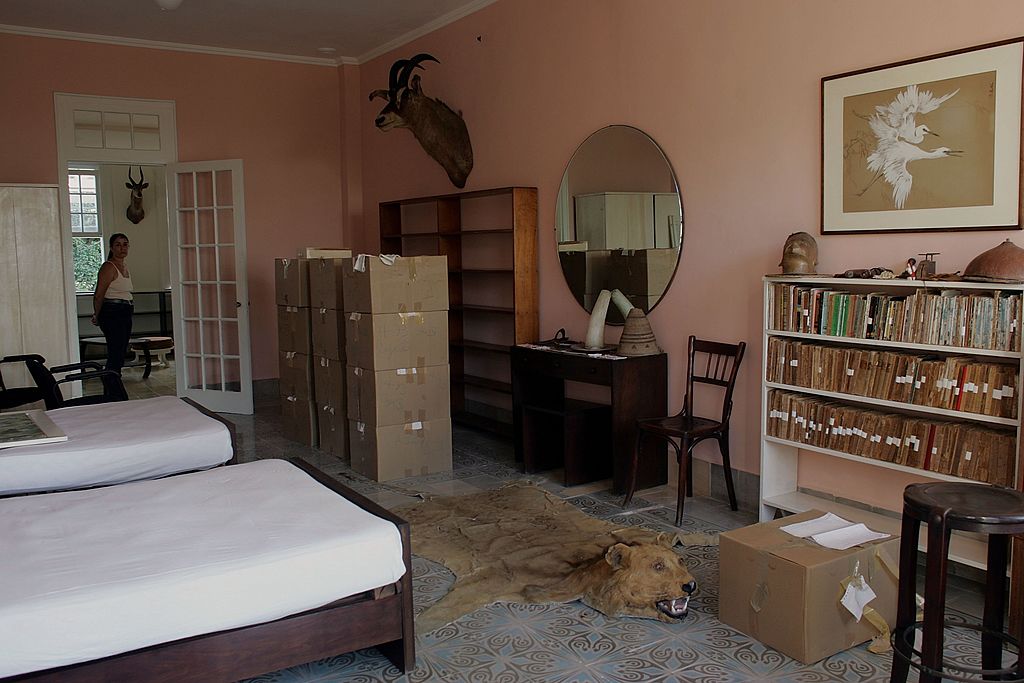
A worker stands in the doorway of one of the rooms off Finca VigIia, or “Lookout Farm,” Ernest Hemingway’s home from 1939 to 1960 on December 4, 2006 in Havana, Cuba. (Photo by Joe Raedle/Getty Images)
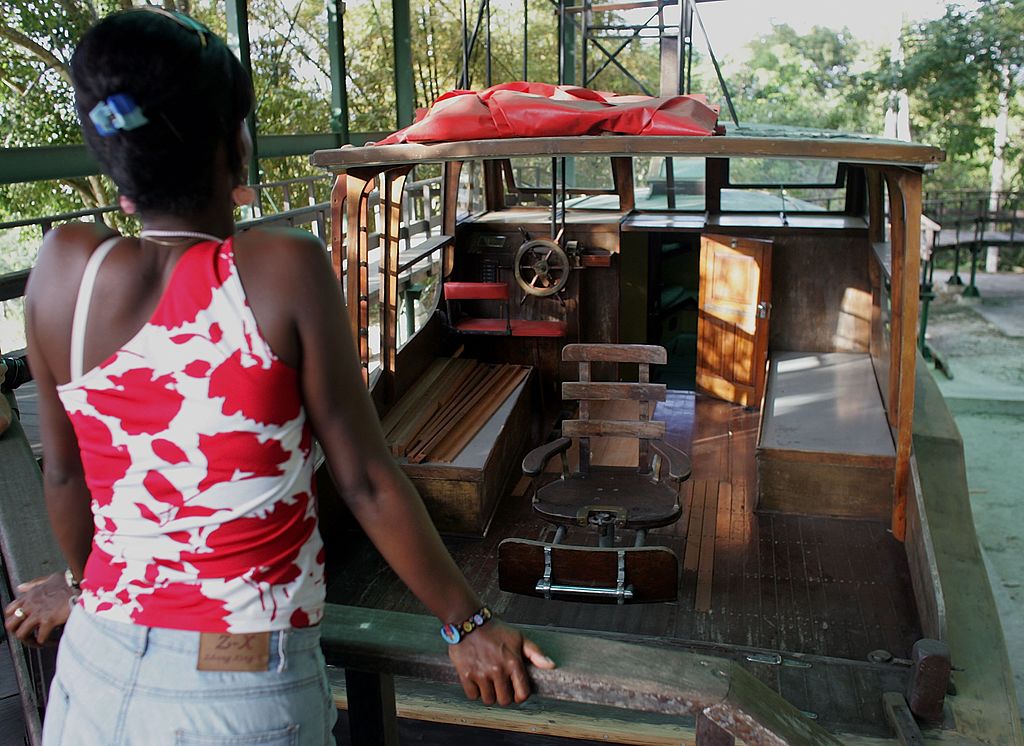
A worker looks at Ernest Hemingway’s fishing boat named “Pilar” located on the Finca VigIia, or “Lookout Farm,” his home from 1939 to 1960 December 4, 2006 in Havana, Cuba. (Photo by Joe Raedle/Getty Images)
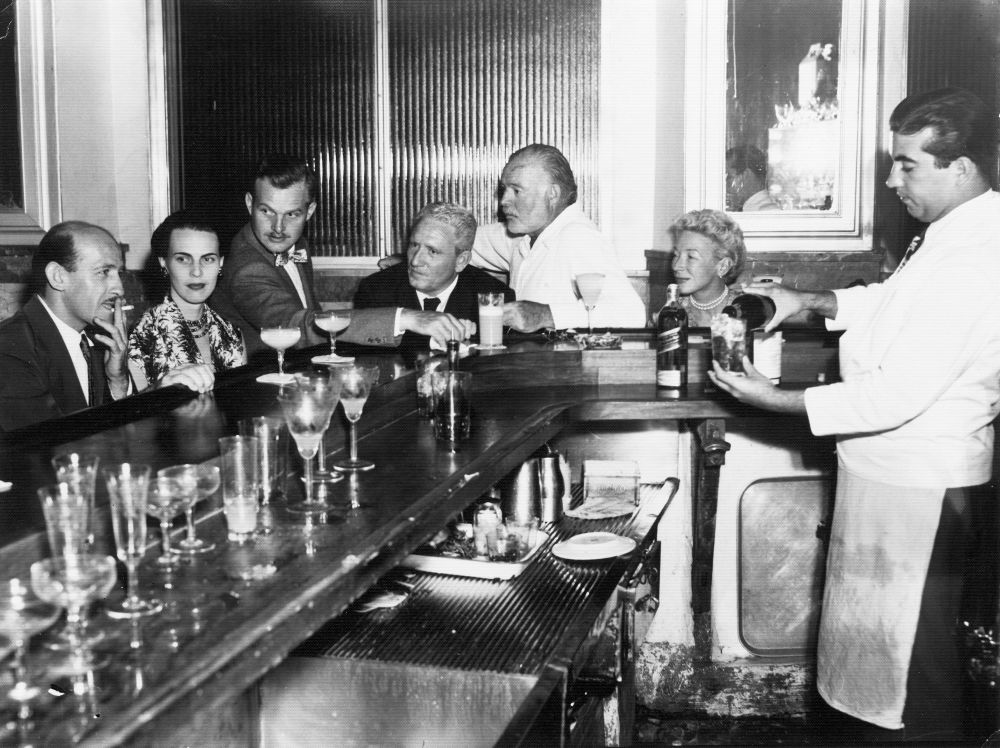
Not dated, ca. 1955 – La Floridita, Havana, Cuba. Roberto Herrera, Byra “Puck” Whittlesey, John “Bumby” Hemingway, Spencer Tracy, Ernest Hemingway, and Mary Hemingway. Please credit: “Ernest Hemingway Photograph Collection, John Fitzgerald Kennedy Library, Boston.”
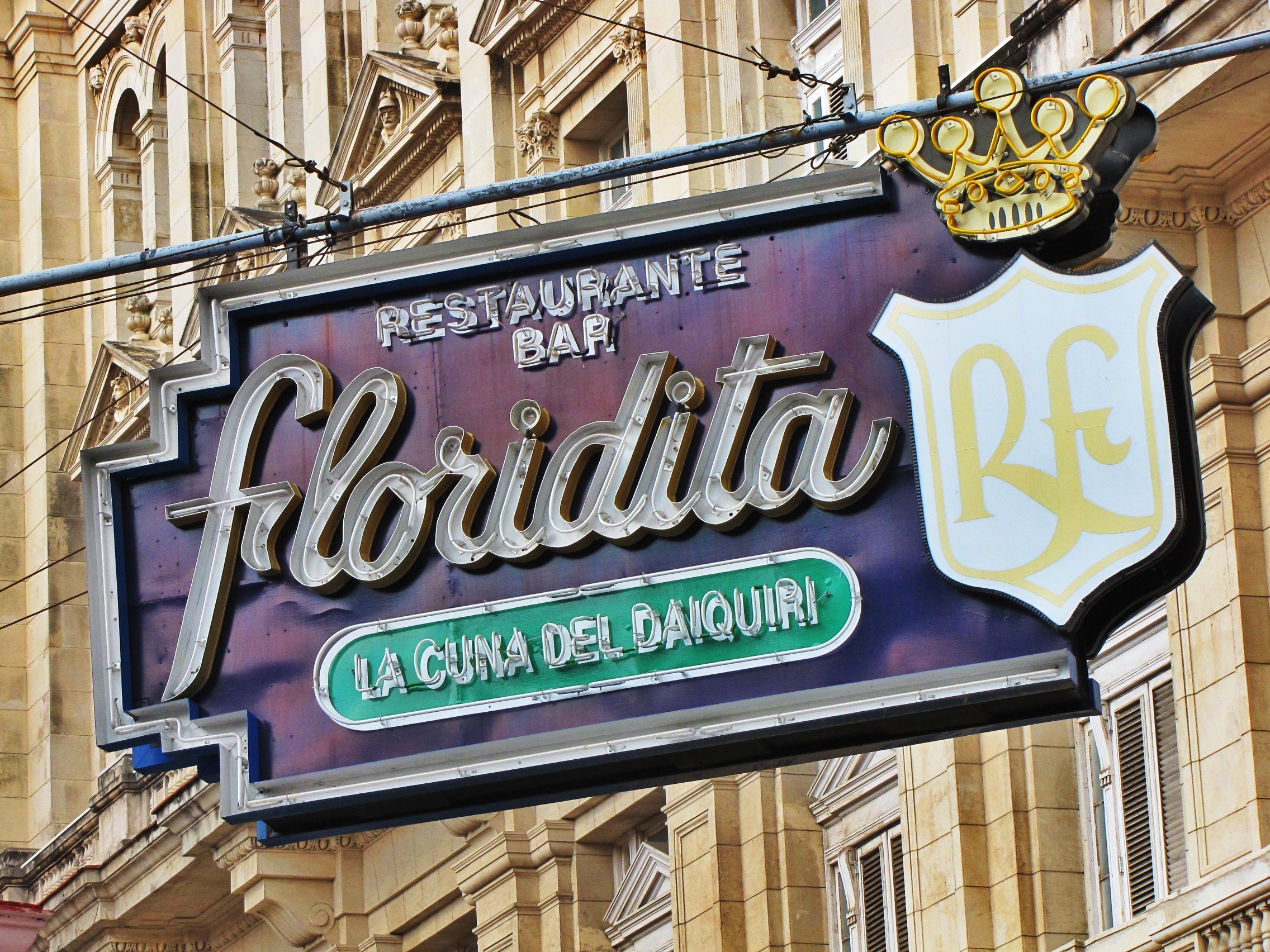
Floridita. Image: Laura Bly / Flickr
In 1932, while staying at the Hotel Ambos Mundos in Havana, Hemingway walked past El Floridita Restaurant and Cocktail Bar when he needed a restroom and decided to go in to use theirs. On his way out, he was offered a daiquiri which he accepted, and upon tasting it, he provided the barman with the following feedback:
“That’s good but I prefer it without sugar and double rum.”
Daiquiris typically consist of rum, lime juice and sugar, but Hemingway was diabetic. Although it would have been easy enough for Constantino Ribalaigua Vert, the barman who later became the owner of El Floridita, to recommend an alternative cocktail, he tailored their classic daiquiri to Hemingway’s palate, and in the process created the Papa Double, which evolved into what is today known as the Hemingway Special.
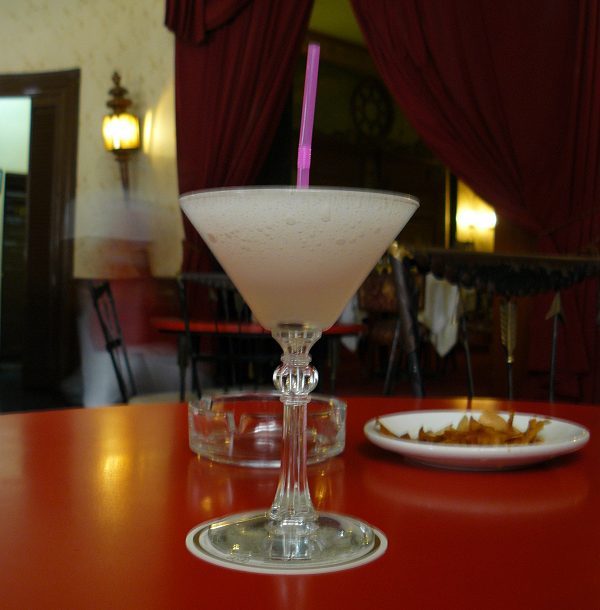
Image: Flemming Floridita Havana Cuba / Flickr
Ingredients
- 60ml Havana Club 3 Años, white rum
- 15ml Luxardo Maraschino liqueur
- 15ml freshly squeezed lime juice
- 40ml freshly squeezed grapefruit juice
Writer’s note: Havana Club is not available in the US because of the trade embargo imposed in 1962, so for readers based in the US, I would recommend using Papa’s Pilar Blonde Rum.
You should be able to find a bottle of Luxardo Maraschino at Liquor City; to my knowledge, they are the only importer of Luxardo products to South Africa. Because Luxardo Maraschino is not always easily accessible in South Africa, I have tried to find a replacement and consulted with some of the best local mixologists — they all agree that nothing comes close.
The classic method
- Leave cocktail/coupe glass in freezer for at least 15 minutes
- Add white rum, Luxardo Maraschino liqueur, fresh lime juice and grapefruit juice to cocktail shaker
- Fill a cocktail shaker with ice and shake
- Strain from cocktail shaker into the frozen cocktail/coupe glass
The Hemingway Special is the most refreshing cocktail I can think of, provided you use freshly squeezed grapefruit, lime juice, and, of course, real Luxardo Maraschino liqueur.
The El Floridita method
- Add ice, white rum, Luxardo Maraschino liqueur, fresh lime juice and grapefruit juice to blender
- Blend on low and gradually increase speed to medium and high
- Pour into cocktail/coupe glass
In the words of Hemingway:
“This frozen daiquiri, so well beaten as it is, looks like the sea where the wave falls away from the bow of a ship when she is doing thirty knots…
“No taste of alcohol and felt, as you drank them, the way downhill glacier skiing feels running through powder snow and, after the sixth and eighth, felt like downhill glacier skiing feels when you are running unroped.”
The recommended timing for cocktails like the martini, and the Manhattan is before dinner, while cocktails like the Sazerac and Old Fashioned make great after-dinner drinks. The Hemingway Special is unique in that it is one of the few cocktails with a recommended timing of ‘all day’.
Although Hemingway developed a taste for rum cocktails in 1932, less than a decade later, much of the cocktail world followed his lead when World War 2 started, and excess grain had to be reserved for feeding people and livestock; British rationing of grain and agricultural fertiliser in the United Kingdom also had a knock-on effect on Ireland’s alcohol production. When the US officially joined the war in 1941, US distillers started manufacturing high-proof industrial alcohol for the war instead of human consumption. As gin, vodka, whiskey, etc began to dry up, it resulted in the increased popularity of rum imported from the Caribbean, rum-based cocktails and, for a few years at least, it also meant, “a farewell to martinis”. DM/ML
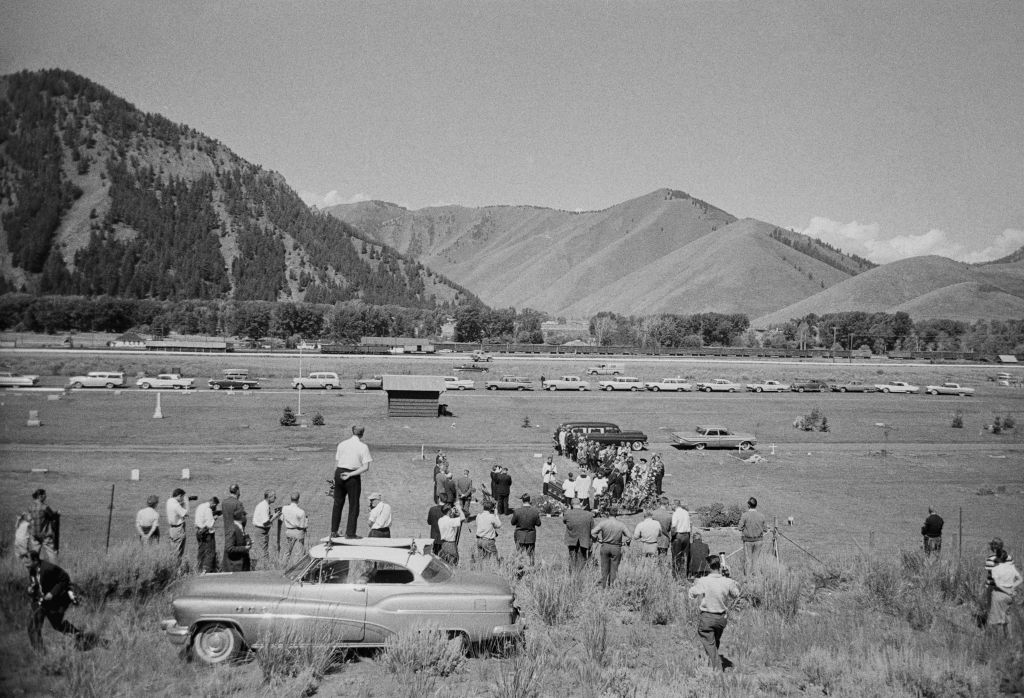
Unspecified mourners attend the funeral of American author Ernest Hemingway (1899-1961), held at Ketchum Cemetery in Ketchum, in the Wood River Valley, Idaho, 5th July 1961. The service was conducted by Reverend Robert J Waldemann, the Roman Catholic pastor of St Charles Church in Hailey, Idaho, and of Our Lady of the Snows in Ketchum. (Photo by William Lovelace/Express/Hulton Archive/Getty Images)
In case you missed it, also read Shaken, not stirred: In pursuit of a classic cocktail


















 Become an Insider
Become an Insider
Comments - Please login in order to comment.